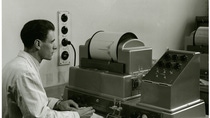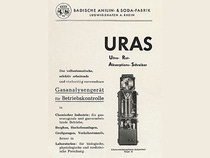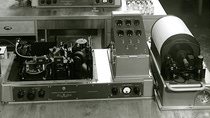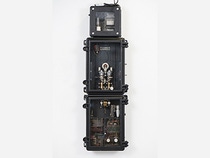Innovation
The story of an innovation at BASF: Infrared spectroscopy

In 1938, BASF chemists Erwin Lehrer and Karl Friedrich Luft developed a device that was to turn the chemical industry on its head.
Over 200 years ago, in the year of 1800, astronomer William Herschel conducted an experiment to determine the temperature of the various colors of sunlight. Little did he know that he was about to discover a previously unknown radiation spectrum. First referred to as ultrared and later as infrared, this newly discovered spectrum was invisible to the naked eye, which meant that the only indication of its existence was provided by the thermometer. While we cannot see infrared light, we can detect the increase in temperature caused by it.
Physicists have long focused on the question of how to capture the broad spectrum of electromagnetic infrared beams with utmost accuracy. This involved several challenges. Since ambient conditions had to be kept as constant as possible, most measurements were conducted over a period of several hours in darkened and heated basement rooms.
The practical use of the newly discovered infrared radiation only shifted into focus when this measurement process was considerably simplified. As it turned out, infrared radiation harbored vast potential. When infrared light passes through a chemical substance, a part of the molecules absorb the energy and start to oscillate. Since every substance absorbs a different amount of thermal radiation, this factor can be used as a unique “fingerprint” to characterize different substances.

The product brochure promoted the URAS as „very versatile“.
In 1938, BASF chemists Erwin Lehrer and Karl Friedrich Luft developed a device that was to turn the chemical industry on its head. The fully automatic ultrared absorption recorder (Ultra-Rot-Absorptions-Schreiber – URAS) was capable of determining the concentration of more than 100 gases quickly and reliably. BASF aptly described the URAS as a “highly versatile” device, as it was to ensure smooth production processes and increased occupational safety not only in the chemical industry, but also in mining, road tunnels and medical facilities.
The URAS was a huge step forward, especially in the chemical industry. Previously, samples had to be taken in elaborate processes and analyzed in a nearby laboratory. At the point when a contamination was found, a large quantity of the gas in question had already been processed further.

Printed spectras had to be analysed manually.
In particular, the URAS helped to considerably simplify the process of ammonia synthesis, which is of great importance at BASF. In the past, carbon monoxide contamination led to production losses time and again. About 30 years after the development of the trailblazing Haber-Bosch process, BASF chemists once again succeeded in making production safer and more efficient thanks to the URAS. Over a long period of time, the URAS ranked number one among the most commonly used analysis devices, with a total of 1122 units produced by 1986.

As a piece of memory, there is still an URAS at the BASF site in Ludwigshafen.
Infrared spectroscopy has gradually evolved over recent decades. Measuring devices became smaller and the process became ever shorter. Today, 80 years after the invention of the URAS, BASF is turning another page in the history of spectroscopy with its new “pocket laboratory” – an ultra-thin infrared sensor called Hertzstück™.